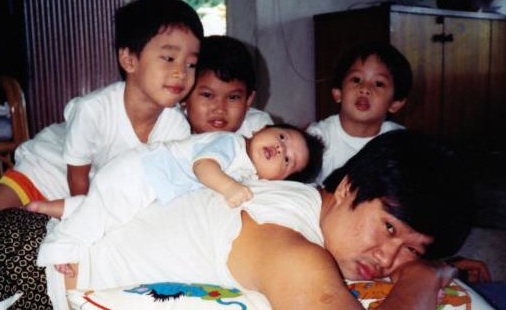As for kids becoming fat, most are not 100% their own fault. Parental styles contribute, family and cultural lifestyle, as well as peer pressure play roles in this 'disease' of fatness. Some (a lot) take offense to public comments on fatness as well.
Understanding the risks and complications may help in creating awareness in the general public. Only then can an effective counter-measure be implemented.

********************************************
Diagnosis and Assessment of Obesity
Diagnosis is based on the BMI centile charts in children and adolescence. This is in contrast to adults where the absolute value of BMI determine whether a person is obese.
Calculation of BMI is the same = Weight (kg) / [ Height (cm) ] square root.
Centile charts here.
Anything above 95% is considered OBESE.
What to do when you see a really fat kid in your clinic?
History Taking:
Family History:
- Fat parents and siblings
- Metabolic syndrome or cardiovascular disease in family
Antenatal and Postnatal History:
- GDM mother
- High birth weight
- Non-exclusive breastfeed
- Early introduction to sweetened fluids and food
 |
| Monster 5 kg. |
Social History:
- Diet history: frequency of snacks, carbonated or sweet drinks, eating as a family, eating outside.
- Physical activity: frequency, types of activities, 'screen' time ie. TV, internet, playstation.
- Attitude towards obesity, and losing weight.
- School and peer: Bullying, bully, taunting.
Symptoms (related to Complications or Comorbids, see later)
Physical Examination
Short statured (Cushing syndrome)
Acne (PCOS, Cushing syndrome)
Acanthosis nigricans (Metabolic syndrome, PCOS)
Blood pressure
Abducent nerve palsy, papilloedema (Pseudoumor cerebri)
Striae (Cushing syndrome)
Abdominal pain (Gallstone)
Hepatomegaly (Non-alcoholic fatty liver disease)
Limited range of movement of hips (Slipped capital femoral epiphysis)
Bowing of legs (Blounts disease)
Investigations
Fasting lipid profile
Fasting sugar profile
Liver function test
Imaging as indicated according to complications.
Hip and lower limb x-ray
Abdominal ultrasound
Complications and Comorbids
Respiratory System
- Asthma
- Obstructive sleep apnea
Cardiovascular System
- Hypertension
Endocrine System
- Metabolic syndrome
- Diabetes mellitus
- GERD
- Non-alcoholic fatty liver disease
- Gallstone
Musculoskeletal System
- Blount disease
- Slipped capital femoral epiphysis
Neurological
- Pseudotumor cerebri
Psychological
- Depression
- Worsening school performance
- Eating disorders
TO BE CONTINUED... Management and Prevention
References:
1. http://www2.aap.org/obesity/pdf/COANImplementationGuide62607FINAL.pdf
2. CPG, Obesity, Ministry of Health Malaysia
3. Kliegman, Robert M., et al., Nelson Textbook of Pediatrics, 18th ed., Elsevier Saunders.
 |
| Yang tengah tu pon gumok juga |

